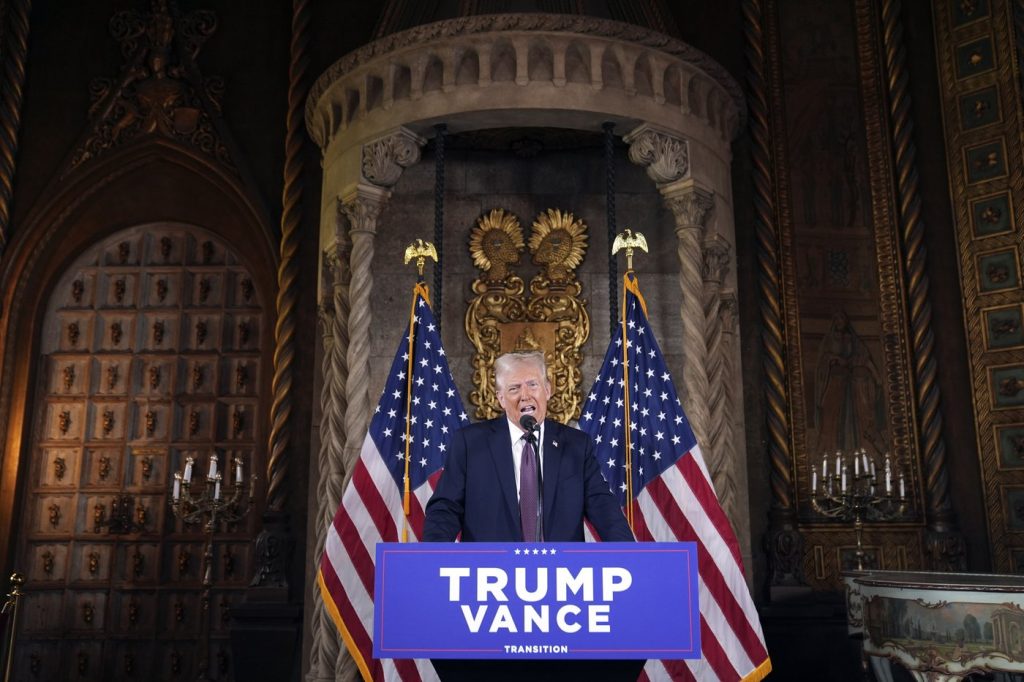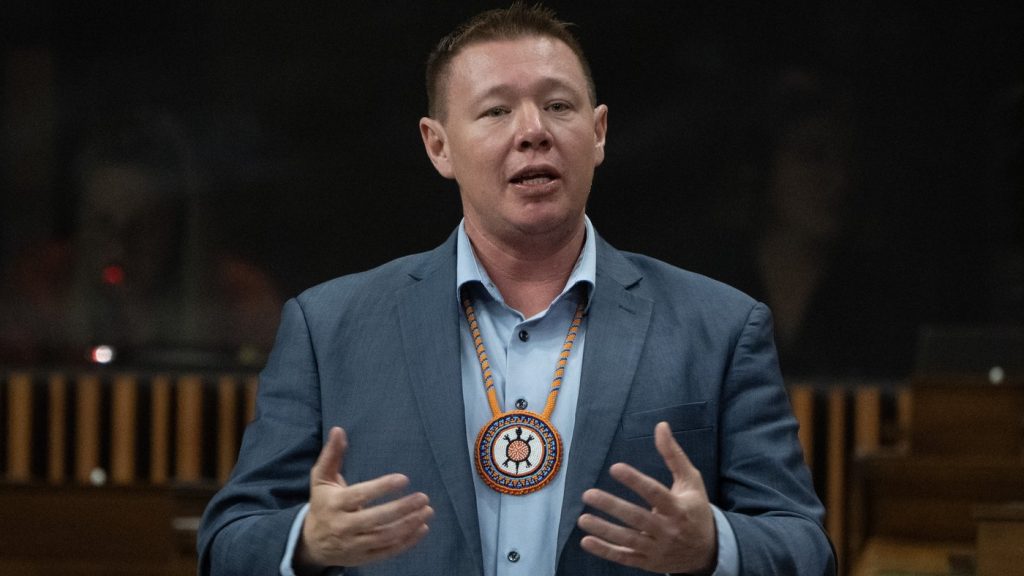‘What are we talking about?’ Trump’s ‘economic force’ comments cause worry, disbelief

Posted Jan 8, 2025 05:00:04 AM.
Last Updated Jan 8, 2025 03:45:24 PM.
TORONTO — Incoming U.S. president Donald Trump’s escalating rhetoric around implementing tariffs on Canadian products are sparking worry and disbelief, though some of the companies potentially most affected are staying quiet.
Speaking at a press conference Tuesday, Trump threatened to use “economic force” to annex Canada, while also once again raising issues with the trade deficit and saying the U.S. doesn’t need to buy Canadian lumber, dairy or automobiles.
“They send us hundreds of thousands of cars, they make a lot of money with that. They send us a lot of other things that we don’t need. We don’t need their cars and we don’t need the other products. We don’t need their milk,” said Trump to reporters at his Mar-a-Lago club in Florida.
Late in the day, he also posted maps on his Truth Social account showing Canada as part of the United States.
His latest comments follow on his threats to impose a 25 per cent tariff on goods coming in from Canada and Mexico, citing border security concerns.
Trump’s threats show he doesn’t understand how interconnected the Canada-U.S. auto business is, said Flavio Volpe, president of the Automotive Parts Manufacturers’ Association.
“You can’t put daylight between the Canadian sector and the American sector. These are American companies,” said Volpe.
Imposing 25 per cent tariffs on auto imports would likely lead to widespread shutdowns in the sector because automakers would be booking substantial losses on every car produced, he said.
“It’s a madness that shareholders are going to respond to immediately. The market’s going to respond to immediately,” said Volpe.
“This is much, much bigger than a tool maker in Windsor or a blow-moulded plastic supplier in Markham.”
Trump’s wider comments about Canada becoming part of the U.S., along with his statements about seizing the Panama Canal and Greenland, show he wants to sow chaos, said Volpe.
“I mean, what are we talking about?” said Volpe. “Some men just like to watch the world burn, and I think he’s one of them.”
Speaking at a conference Tuesday shortly before Trump’s economic force comments, RBC chief executive Dave McKay expressed concern about the rising tensions.
“It’s disappointing to hear the rhetoric intensify,” said McKay. “It’s causing concern among everybody that it will do economic damage, and we’re not sure the objectives it’s trying to achieve.”
Kurt Niquidet, president of the BC Lumber Trade Council, urged in a statement for the U.S. and Canadian governments to find a fair and sustainable solution.
“The forest sector faces unprecedented challenges, and it is critical for government and industry to work together at the federal and provincial levels to focus on the impacts of potential tariffs and trade frictions with the United States.”
Niquidet emphasized that U.S. consumer demand exceeds what domestic mills can supply and that tariffs would disrupt the supply chain and lead to higher costs for American families.
Along with threatening tariffs, Trump claimed in his press conference that the U.S. had no need for Canadian goods. He once again raised issue with the U.S. trade deficit with Canada, characterizing it as a subsidy.
“We lose in trade deficits, we’re losing massive,” he said.
“We don’t need anything. So why are we losing $200 billion a year and more?” he said.
While not actually that high, the U.S. trade deficit with Canada has spiked considerably in recent years. It was $108.6 billion for 2023, $121.6 billion for 2022 and $81.4 billion in 2021, according to Statistics Canada, well above the $41.2 billion it averaged in the preceding decade.
While a deficit exists, due in no small part because of Canadian oil and gas exports to the U.S., it doesn’t mean it’s a negative, said Mount Royal University political scientist Duane Bratt.
“(Trump) sees it like a balance sheet. If they don’t need Canadian goods, why would they keep buying Canadian goods? It’s not a subsidy,” said Bratt.
“Why do Americans buy so many Canadian products in the hundreds of billions of dollars? Because the product is good, or the price is good, or some combination of the two.”
Canada’s best strategy for now is to take a “wait and see” approach publicly, while avoiding any threats of retaliation, said Fen Hampson, an international affairs professor at Carleton University and co-chair of its expert group on Canada-U.S. relations.
He said Canada benefits when it remains below the radar and doesnot take the bait.
“When you’re the smaller party, you don’t make threats, which first of all aren’t going to be credible because the big guy can stomp on you like a mess. So we’ve got to be a lot more nimble, we’ve got to be a lot smarter and our Prime Minister should keep his mouth shut.”
Prime Minister Justin Trudeau responded to Trump’s comments on Tuesday by saying, “there isn’t a snowball’s chance in hell that Canada would become part of the United States.”
“Workers and communities in both our countries benefit from being each other’s biggest trading and security partner,” Trudeau added in a social media post.
Companies are generally staying quieter so far. Forestry firms like Canfor and West Fraser declined to comment directly. Saputo didn’t respond to a request for comment, nor did the groups representing major automotive brands.
Agropur said it’s closely monitoring statements related to the economic relationship between Canada and the United States.
But while Hampson advises caution for now, he said Canada should stay ready to respond with targeted measures of its own, such as with tariffs on products like California wine or Tennessee whiskey.
The federal government could also tax digital services Canadians frequently use such as Netflix, Amazon or Uber, or go after the U.S. tourism sector by taxing those who vacation in sunny destinations like Florida or California during the winter months.
“They’re going to take notice of that, particularly in Trump’s home state, where Canadians are a major contributor to the local economy,” said Hampson.
This report by The Canadian Press was first published Jan. 8, 2025.
Ian Bickis and Sammy Hudes, The Canadian Press








